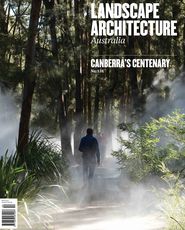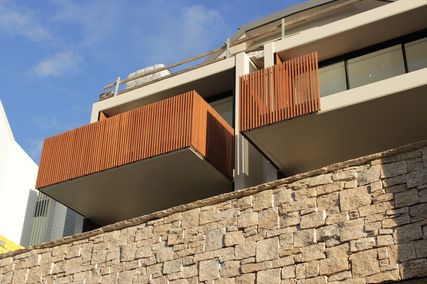“Resistance to change is the greatest hindrance to human development. Discuss” was the essay task on my first day at the Australian International Independent School (AIIS) in fifth form in 1977. The AIIS offered a progressive education at a secular, independent school. It was a new format for senior secondary education that sprang from Whitlam government initiatives in education in the mid 1970s. The subject of a couple of articles in the May 2013 issue of Landscape Architecture Australia was in that room with me.
It was the year Young Marble Giants sang, “And when I see you/constantly changing/never the same as/never remaining.” A couple of years later I moved to Canberra to study at Roger Johnson’s new studio building at the then Canberra College of Advanced Education (now the University of Canberra), another product of Whitlam government initiatives in tertiary education.
A further omen, if you like. The other day I was at the media launch of the Lodge on the Lake competition (in my role as a jury member – winners were announced on 23 May). As I walked towards the lake edge at Attunga Point, I spied a dull round disc on the bare earth surface – it was a twenty-cent piece, dated 1979, the year I first came to Canberra to live.
Canberra celebrates one hundred years as Australia’s capital this year, and has been constantly changing over that period. From the sketches by the Griffins to the skeleton of the landscape planted by Charles Weston and his successors, which created the squares and circles for later designers to colour in, Canberra has been a crucible for new design thinking.
Canberra had a series of development spurts during the first decades, initially with the Federal Capital Commission (FCC), then, after a hiatus, the National Capital Development Commission (NCDC) from the late 1950s to 1988. See John Gray’s article on page 22 of the issue for details. In the FCC period, a distinct Federal Capital style was developed, much commented on in various histories, with a complementary landscape character that owes a lot to Weston. The NCDC period saw modernist buildings and landscapes begin to populate the broad spaces in the Central National Area. What distinguishes Canberra from other developing areas in Australia is the landscape fabric that encloses the urban areas. This encompasses the regenerated “natural” on the hills and ridges, but also the urban plantings (the “green infrastructure” that the AILA promotes), Weston’s Haig Park, avenue plantings, the Westbourne Woods trial plantings, the 1960s Dick Clough lake perimeter and new town plantings, now expressed in the National Arboretum by Taylor Cullity Lethlean (project review on page 52 of the issue).
The special issue of Landscape Architecture Australia looks at Canberra’s landscape on its hundredth birthday and at the people who brought it here. It also questions where it might go and who may be taking it there.
Each author has a particular focus. A crucial driver of Canberra’s evolution has clearly been the input from the public sector. More so than with the procurement of buildings and civil engineering, the landscape has been trialled and then implemented across the decades, and the character and quality of the vegetation has contributed to the life of the city. Designers from all over Australia have contributed to Canberra’s development. Although there is a strong local landscape industry, with skilled and experienced practitioners, the Canberra landscape, in keeping with the national story, is truly a collection of landscapes designed by Australia’s best designers.
This issue hopes to do justice to the hundred-year story. I welcome comments on the AILA’s OpenSpace forum at aila.org.au/openspace.
Source

Discussion
Published online: 24 May 2013
Words:
Neil Hobbs
Images:
Dianna Snape
Issue
Landscape Architecture Australia, May 2013
















